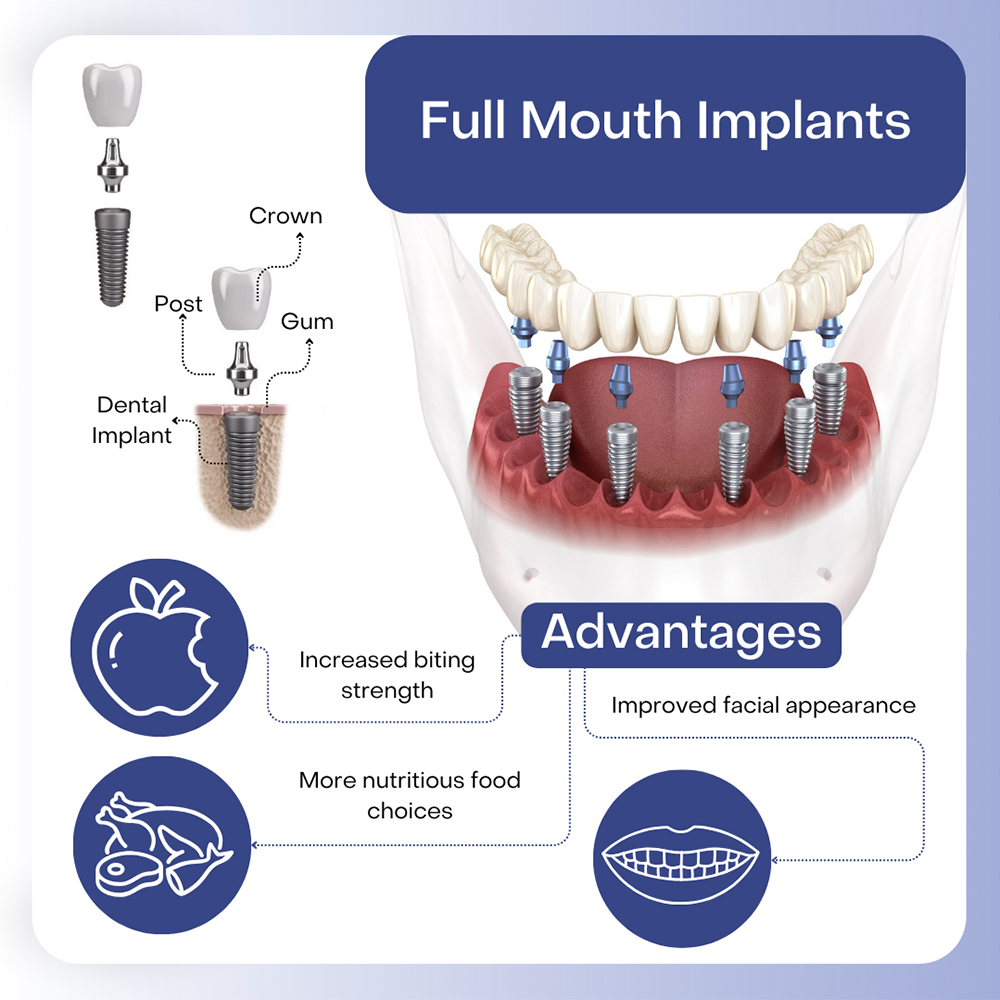Some Known Details About Dental Sense
Some Known Details About Dental Sense
Blog Article
The Facts About Dental Sense Uncovered
Table of ContentsThe Single Strategy To Use For Dental SenseThe 15-Second Trick For Dental Sense8 Easy Facts About Dental Sense DescribedThe 4-Minute Rule for Dental Sense
are medical tools surgically implanted into the jaw to recover a person's capability to eat or their appearance. They give assistance for fabricated (fake) teeth, such as crowns, bridges, or dentures. When a tooth is shed due to injury or disease, an individual can experience difficulties such as rapid bone loss, defective speech, or adjustments to chewing patterns that result in pain.Oral implant systems are composed of a dental implant body and dental implant abutment and may also include an abutment addiction screw. Front tooth filling. The oral implant body is operatively placed in the jawbone instead of the tooth's origin. The dental implant joint is normally affixed to the implant body by the joint fixation screw and prolongs with gums into the mouth to support the attached artificial teeth
(https://hub.docker.com/u/dentalsense1?_gl=1*1hbckpe*_ga*NDQyNDY0NDI5LjE3MzY1MTc3NTQ.*_ga_XJWPQMJYHQ*MTczNjUxNzc1NC4xLjEuMTczNjUxODA1MC42MC4wLjA.)Structure of The Oral Implant System choosing oral implants, speak with your dental supplier regarding the prospective advantages and threats, and whether you are a prospect for the treatment. Things to consider: Your total wellness is an important aspect in establishing whether you are an excellent prospect for dental implants, how long it will certainly require to heal, and how much time the implant may remain in location.
Cigarette smoking might influence the healing procedure and decrease the lasting success of the dental implant. The recovery procedure for the dental implant body might take several months or longer, during which time you generally have a short-term abutment in place of the tooth. the oral implant treatment: Carefully follow the dental hygiene guidelines offered to you by your oral supplier.
The Basic Principles Of Dental Sense
Implant failing can result in the requirement for an additional medical procedure to take care of or replace the dental implant system. Restores the capacity to eat Recovers cosmetic look Aids keep the jawbone from shrinking as a result of bone loss Maintains the health of the bordering bone and gums Helps maintain adjacent (close-by) teeth stable Improves quality of life Damage to bordering natural teeth during implant positioning Injury to the surrounding tissues during surgery, such as sinus perforation Injury during surgical procedure (for instance, crack of bordering jawbone) Insufficient function, such as seeming like the teeth do not attack with each other normally An experience that the tooth hangs or turning in place arising from a joint screw loosening up Implant body failure (looseness of the implant body) because of systemic infection, which may be most likely in patients with unchecked diabetes due to neighborhood infection in bone and gum tissues supporting the dental implant body due to postponed recovery, which might be most likely in people that smoke Difficulty cleaning up the periodontals around the dental implant, resulting in bad oral hygiene Unattended gum illness Post-surgical pins and needles due to nerve impingement or damages Constantly alert healthcare service providers and imaging technicians that you have dental implants prior to any kind of magnetic resonance imaging (MRI) or x-ray procedures.
FDA is not knowledgeable about any kind of negative occasions reported for MRI or x-ray treatments with oral implants. Oral implants systems are typically constructed from products that comply with global consensus standards of the International Company for Standardization (ISO) or ASTM International. These criteria have details of what makes a safe product.

An oral implant is a structure that replaces a missing tooth. With screw-like devices, the specialist inserts an implant into the jawbone, great site and it acts as an anchor for a synthetic tooth, called a crown.
The 8-Second Trick For Dental Sense
Some people are not qualified for oral implant surgical procedure. It is for oral doctors to operate people with: acute illnessuncontrollable metabolic diseasebone or soft tissue condition or infectionIf these problems are settled, an individual can have the surgical treatment. In, oral specialists abstain from running on people with: If people with any one of the above undertake oral implant surgical treatment, there is a greater threat of the dental implant falling short.

Dental dental implant surgical procedure is a personalized procedure. It's not the same for everyone. The adhering to offers a general review of what you can anticipate your dental professional, dental cosmetic surgeon, periodontist or prosthodontist to do: Put the dental implant operatively. Offer you time to heal. Affix the post and final crown, bridge or denture.
Next off, your doctor will very carefully position the dental implant into your jaw. Lastly, your surgeon will reposition your gum tissues and shut the laceration with stitches. If your dental implant is near the front of your mouth, your dental practitioner will certainly make a temporary tooth for you to wear until you recover. In this way, you won't have a space in your smile while you recuperate.
Some Known Details About Dental Sense
Your service provider can inform you what to expect in your situation. During the recovery phase, your jawbone should fuse to the oral implant. This process, called osseointegration, is vital for stability and long-lasting success. This procedure can take anywhere from three to 9 months. Sometimes, it might take much longer.
As soon as your dental implant heals, your dental professional can affix the joint (little adapter message) and your last repair (crown, bridge or denture). This typically takes concerning one hour to complete and may require a second small surgical treatment. You should not feel any kind of pain during your oral implant procedure since your supplier will certainly utilize drug to numb your gums.
Report this page